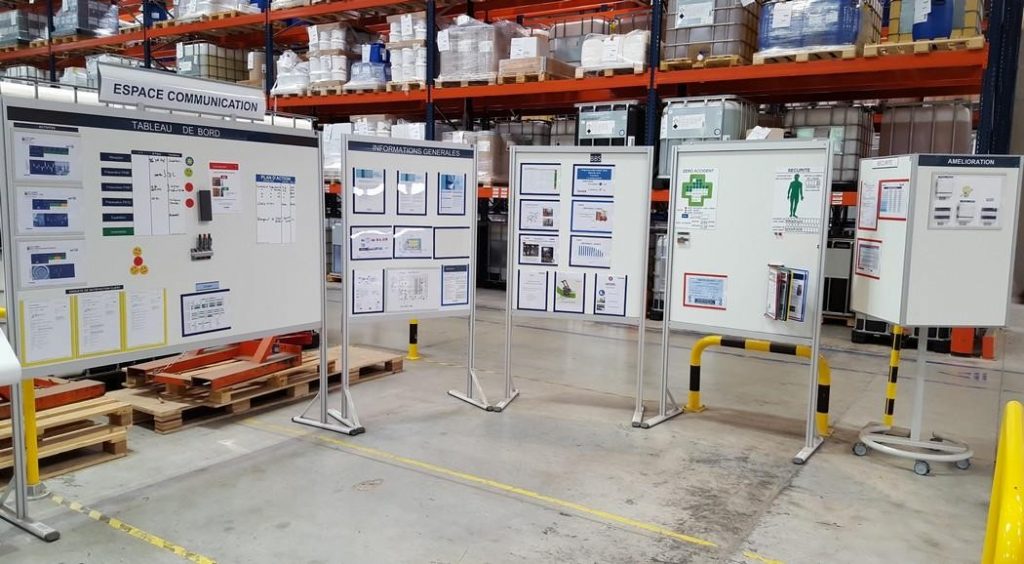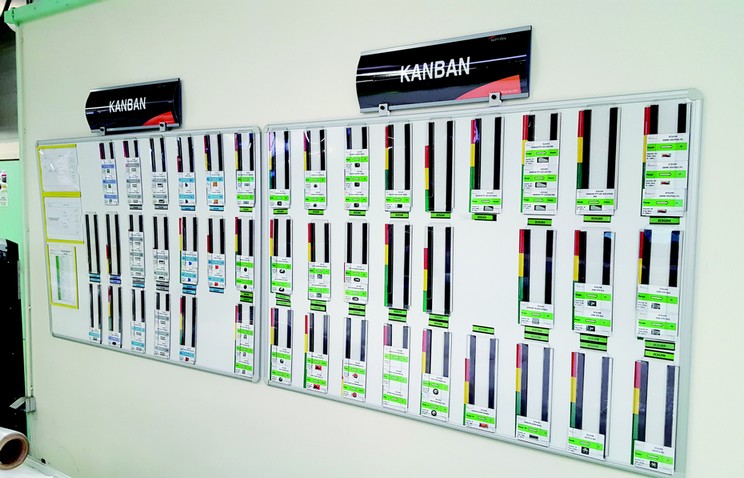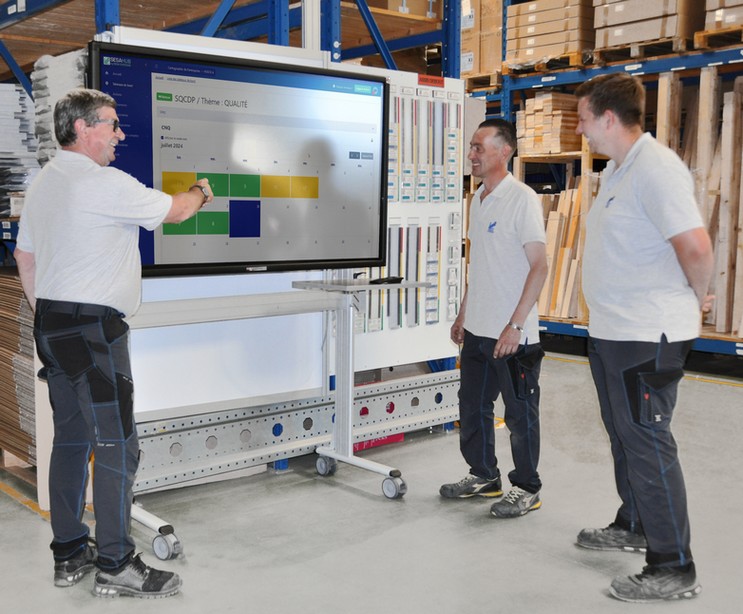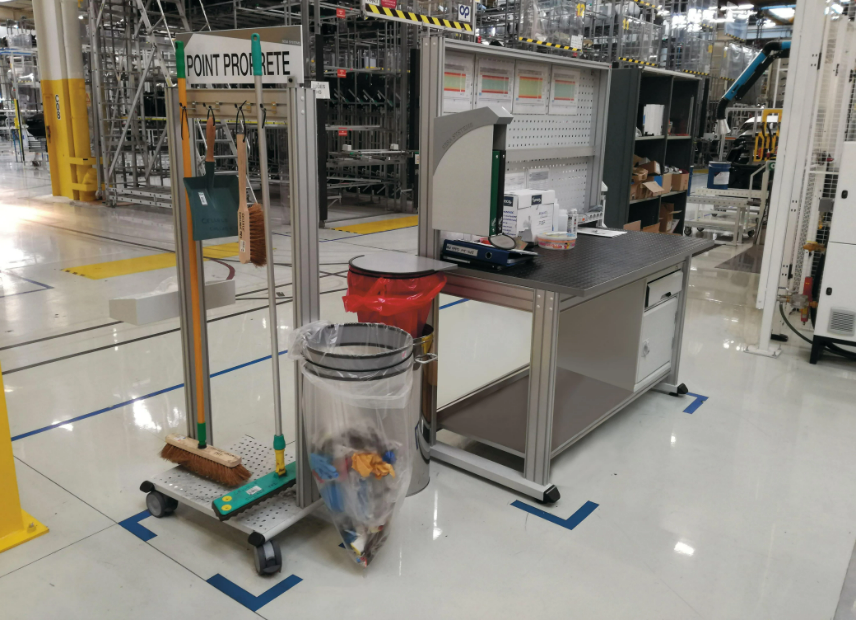How to move from physical visual management to digital?
With the development of online services, production companies are increasingly moving towards the factory of the future. That is, the processes are digitized and move from a physical medium to a digital medium. This is the case of Digital Visual Management, which is a real digital extension of Visual Management in the classical sense.

What is Visual Management?
Before defining Digital Visual Management, it is appropriate to recall the basics of Visual Management. Visual Management is a type of management based on a principle according to which the human being tends to better retain and understand visual information. Indeed, on average, we retain 10% of what we read, 20% of what we hear and 30% of what we see. It is no coincidence that the software and applications we use today opt for pictograms instead of textual menus. For example, this is the case of the toothed wheel which is assimilated to the settings or the magnifying glass, which is assimilated to the search. These visual pictograms are more impactful and more easily recognizable by users. In the same way, Visual Management is intended to facilitate the transmission of information between a large number of people regardless of their role. For this, it is based on several communication techniques. Digital Visual Management is therefore the digital extension of this management. It relies on connected computer tools to retrieve information and synchronize it with all the media where it must be disseminated. Concretely, it can be a connected screen displaying the production objectives and the progress of the teams in relation to the latter. Whether digital or classic, Visual Management therefore aims to improve access to information and therefore decision-making but also serves to improve the performance of teams via visual management. Thanks to Digital Visual Management, the same information can be disseminated in several different places (different departments, different sites, and even among teleworking employees)
What are the advantages of Digital Visual Management compared to traditional Visual Management?
The implementation of Digital Visual Management within your company brings several advantages:
- Greater team autonomy: teams have access to information and know what to do and how to do it. They therefore gain autonomy.
- Visualize processes, risks immediately and work more effectively to comply with processes and avoid risks.
- Improving team performance: Teams no longer work blindly and can track their results in real time against set goals in order to achieve and exceed them more easily. It is easier to identify the gaps between the ideal situation and the actual situation. It is no longer necessary to wait to take stock of the results with a manager because this information is available immediately.
- State of mind of information sharing between teams.
- The immediacy of information in different places. Thanks to the permanent connection of the various devices to the internet, the information is instantly disseminated and available on all connected screens. It is then up to you to install them in each place where necessary!
- Automation of information collection and dissemination. Thanks to different production or reporting systems, it is possible to automate the collection of information, whether in a Lean Manufacturing approach in production companies or in a Lean Office approach in the tertiary sector. Once the data is collected, it can be easily disseminated via software like SESAHUB in multiple places, and instantly.
- Automatic update of KPIs and their tracking in real time from anywhere. Thanks to the permanent connection to the internet, the data collected can be updated on the various monitoring tables and indicators, in real time online. A manager can therefore know the performance of each team and identify areas for improvement at a glance.
- The reduction of time spent in meetings exchanging information. The fact that a lot of information is available from any location also reduces the time spent in meetings. For example, in the case of an international company working with teams abroad, it is often necessary to organize regular points in order to monitor the progress of projects or the performance of each team in order to coordinate them. If all the necessary information is accessible, the duration of meetings and their frequency can therefore be reduced. The same applies if you have to travel to different sites abroad to take stock with the teams. These trips can be less frequent and thus constitute a saving of financial and travel time.

How to set up Digital Visual Management?
To set up a Digital Visual Management project, it is ideally necessary to start from the existing in terms of Visual Management and deploy the digital counterpart thanks to the tools of the Industry 4.0.Si you do not yet have Visual Management set up in your company, you can follow our guide "Make your performance indicators speak with visual management" to set it up in your company. In any case, for each department concerned there are several steps to implement Digital Visual Management:
- Set goals: The first step is to set goals for your department or team. What goals do you want to achieve for your accounting department? For your marketing department? For your production department?... The objectives defined must be defined according to the SMART method. It consists of defining Specific, Measurable, Ambitious, Realistic, and Temporally defined objectives.
- Determine your KPIs: Once the objectives have been defined, it is necessary to determine the performance indicators to monitor and work on that will allow you to achieve the objectives set. These indicators should allow you to manage your work on a daily basis.
- Set up your dashboard: Then create a dashboard to centralize all the KPIs and defined objectives so that they can be seen and followed by all. In the case of Digital Visual Management, it is relevant to use several connected screens to display this information in several places (and even geographically distant sites) to have a global vision and updated in real time. SESA SYSTEMS offers a range of connected screens and SESAHUB software to allow you to set up your dashboard easily!
- Take stock regularly: Finally, the last step is to take stock as a team at regular intervals. For example, a weekly update makes it possible to review the evolution of the KPIs, to follow the work of each one and to situate oneself in relation to the defined objectives. It is also an opportunity to put in place actions to raise the bar if we see that several indicators are in the red. If on the set date, some of your objectives are not achieved, then it will be necessary to check the relevance of the KPIs used and identify which factors have prevented the achievement of the objectives.
If you want to go further, you can consult our Visual Management and Digital Visual Management pages or contact one of our project managers if you want to be helped to implement Visual Management in your company.
















